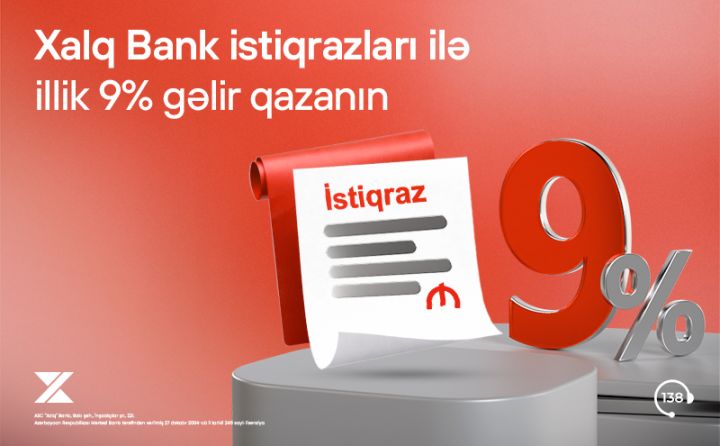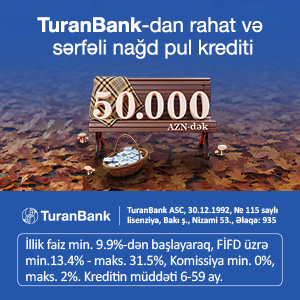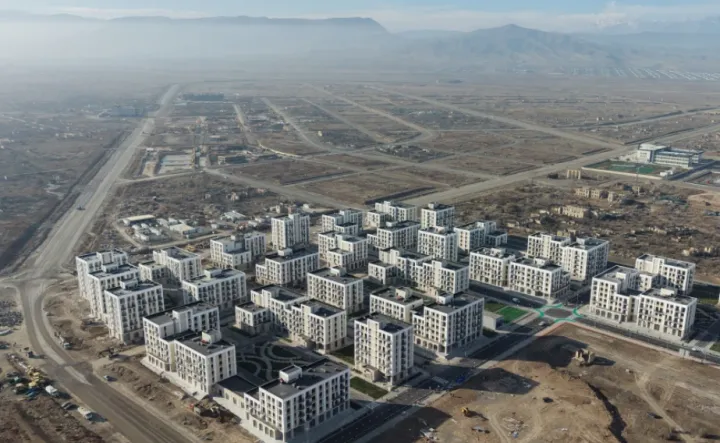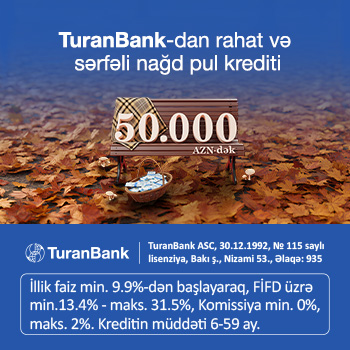Azərbaycanın reytinqini "neqativ" proqnozla təsdiqlədi

"Standard & Poor's" ("S&P") beynəlxalq reytinq agentliyi Azərbaycanın uzunmüddətli və qısamüddətli suveren reytinqini "BB+/B" səviyyəsində təsdiqləyib. Reytinq üzrə proqnoz "neqativ"dir.
Bildirilir ki, reytinqə müsbət təsir edən amil Azərbaycanın yüksək fiskal göstəriciləridir. Burada əsas yük Azərbaycan Dövlət Neft Fondunun (ARDNF) xarici valyutada ifadə olunmuş aktivlərinin payına düşür.
Azerbaijan 'BB+/B' Ratings Affirmed; Outlook Remains Negative
OVERVIEW
In our view, Azerbaijan's institutional arrangements are weak and the
economy continues to adjust to the weaker external environment, with
balance of payments pressures remaining elevated.
At the same time, the government's fiscal position remains strong,
underpinned by substantial foreign-invested savings in the sovereign
wealth fund SOFAZ.
We are affirming our 'BB+/B' ratings on Azerbaijan.
The negative outlook reflects the risks of the country's external and
growth performance being weaker than in our baseline forecast over the
next 6-12 months. It also reflects the potential for risks in the
country's banking system to rise or for the government's fiscal
flexibility to be reduced, for instance because restraining expenditure
becomes challenging for political reasons.
RATING ACTION
On Jan. 27, 2017, S&P Global Ratings affirmed its 'BB+/B' long- and short-term
foreign- and local-currency sovereign credit ratings on the Republic of
Azerbaijan. The outlook remains negative.
RATIONALE
Our ratings on Azerbaijan are primarily supported by the sovereign's strong
fiscal position, underpinned by the large foreign assets accumulated in the
sovereign wealth fund SOFAZ. The ratings are constrained by the weak
institutional effectiveness, narrow and concentrated economic base, and
limited flexibility of monetary policy.
We view Azerbaijan's institutional arrangements as weak, characterized by
highly centralized decision-making, which often lacks transparency and makes
future policy responses difficult to predict. Following a referendum in
September 2016, Azerbaijan's constitution has been amended, which paves the
way for further centralization of power around the president's administration.
In our view, at a time of lower and more volatile oil prices, the economic
outlook for heavily commodity-dependent Azerbaijan will to a significant
degree depend on the authorities' reform agenda, including efforts to improve
the business environment and ultimately diversify the economy away from
commodities. We currently anticipate relatively slow progress on the
structural reform front.
Meanwhile, over the second half of 2016, the economy has continued to adjust
to a weaker external environment. The local currency of Azerbaijan, the manat,
already weakened substantially in 2015 when the Central Bank of Azerbaijan
(CBA) undertook two devaluations, in February and December. Even so, balance
of payments pressures have remained high.
We estimate that the country's current account posted a deficit of 3% of GDP
in 2016, above our previous projected deficit of only 0.5%. The CBA foreign
exchange reserves as well as foreign assets of commercial banks have been on a
downward trend while the currency has depreciated further. Specifically, we
estimate that the CBA reserves reached a 10-year low of US$4 billion at the
end of 2016, having dropped from a peak of $15 billion in 2014.
Against that background, SOFAZ, the government-owned sovereign wealth fund,
has remained the main supplier of foreign exchange for the domestic economy.
SOFAZ has continued to exchange foreign assets into manat and transferred
these local currency proceeds to the government, which has utilized only part
of them, implying a significant reduction in spending against the initially
budgeted levels. We believe the lower government spending has been primarily
due to balance of payments rather than fiscal concerns, with the authorities
tightening expenditures to relieve further external pressures.
To stabilize the foreign exchange market, the government is considering making
a direct transfer from SOFAZ to support the firepower of the Central Bank this
year. The maximum size of the expected transfer is set at 7.5 billion manat
(about $4 billion at current exchange rates). In our view, the actual transfer
will likely be materially lower than the maximum level as the government
remains cautious about using SOFAZ for monetary purposes, given how fast the
CBA reserves have declined historically. We also believe that SOFAZ will
remain primarily a fiscal buffer and we would consider the eventual transfer
as a one-off development.
Our forecast anticipates a gradual reduction in balance of payments pressures.
This reflects:
The adjustment of the exchange rate, which has continued to weaken through
the beginning of 2017. A weaker manat should act as a break on imports,
leading to an improvement in the current account position.
The deposit/savings dollarization reaching its peak and reducing
additional demand for foreign currency.
Higher oil prices (see "S&P Global Ratings Raises Its Oil And Natural Gas
Prices Assumptions For 2017," published on Dec. 14, 2016, on
RatingsDirect).
Additional exports of gas from 2018 when the large Shah Deniz II gas field
comes online as planned.
We continue to assess the Azerbaijani economy's external position as strong on
a stock basis, and we expect the country's liquid external assets to exceed
external debt over the foreseeable future. However, if the improvements in
external flows do not materialize, that could still put pressure on the
ratings if accumulated external buffers are depleted.
We also remain concerned about the stability of Azerbaijan's financial system.
In our view, the banking sector generally remains weak and vulnerable to
difficult economic conditions. The CBA reports nonperforming loan (NPL) levels
of close to 9% as of November 2016 but we consider this to be an
underestimate, with the actual amount of toxic assets being considerably
higher. Potential further manat depreciation could generate challenges for the
banks, given the high proportion of foreign currency loans to residents with
local earnings.
Last year, the government undertook a substantial cleanup of the assets of
International Bank of Azerbaijan (IBA), which is a state-owned institution
with the biggest domestic market share by assets (around 40%). We understand
that the NPL level at the institution before the cleanup began in 2015 was
close to 80%. The government has subsequently transferred IBA's bad assets at
book value to Aqrarkredit, a government-owned nonfinancial enterprise funded
by the central bank. The amount of transferred assets totalled 10 billion
manat in 2015-2016 and a further 5 billion manat transfer is planned this year
(25% of 2016 GDP in total).
We understand that the government provided a sovereign guarantee on
Aqrarkredit's related borrowing from the CBA, equivalent to 25% of 2016 GDP.
Correspondingly, we have included this asset-resolution vehicle's debt to the
central bank in our general government debt statistics, in line with our
treatment of similar transactions in other countries (see Ireland's NAMA,
Slovenia's BAMC, and Nigeria's AMCON). We see risks of the government needing
to contribute further resources to IBA, given that most of its assets are now
in manat while a sizable portion of its liabilities are in foreign currency.
Nevertheless, we still view Azerbaijan's fiscal position as strong and a key
support for the ratings. The government remains in a substantial net asset
position (estimated at 80% of GDP as of end-2016) and we don't anticipate this
changing over the next few years. Moreover, we believe Azerbaijan has a high
level of fiscal flexibility given the large share of capital spending in the
overall expenditure envelope (estimated at about 40% of total government
spending in 2014-2015) and the government's ability to quickly reduce
expenditures when needed. Downside risks remain if that flexibility is
reduced, for instance because political considerations make restraining
expenditure challenging.
We anticipate that the consolidated general government budget will post a
deficit of 4% of GDP this year, mostly reflecting SOFAZ's transfer to the CBA.
However, we expect general government debt to increase by a larger 10% of GDP,
mostly reflecting the effect of the additional asset transfer from IBA to
Aqrarkredit. The budget would gradually move into surplus thereafter,
supported by expenditure restraint, a weaker manat, and rising oil prices.
We forecast that SOFAZ assets will return to growth in dollar terms from 2018
onward, supported by the new gas exports from the Shah Deniz II project.
Beyond the project's fiscal and balance of payments impact, we believe it
would support broader economic growth and employment through growing
investments over the next few years and a subsequent rise in exports. We note
that economic performance in Azerbaijan was particularly weak last year, with
output contracting by an estimated 4%, which is larger than we had forecast.
Our ratings on Azerbaijan remain constrained by the limited effectiveness of
its monetary policy. We believe that the increased flexibility of the manat
exchange rate should ultimately help lessen external pressures and husband
foreign exchange reserves.
At the same time, we believe that, apart from setting the country's foreign
exchange regime and undertaking interventions, the CBA's ability to influence
economic developments remains considerably constrained. We estimate that the
resident deposit dollarization remains at close to 75%, which in our view
severely limits the CBA's attempts to influence domestic monetary conditions.
In addition, Azerbaijan's local currency debt capital market remains small and
underdeveloped, in our view.
OUTLOOK
The negative outlook reflects the risks of the country's external and growth
performance being weaker than in our baseline forecast over the next 6-12
months. It also reflects the potential for risks in the country's banking
system to rise or for the government's fiscal flexibility to be reduced, for
instance because restraining expenditure becomes challenging for political
reasons.
We could lower the ratings if:
Balance of payments pressures do not recede as in our baseline forecast,
leading, for example, to a further decline in central bank and/or
SOFAZ-accumulated reserves or to a further undermining of the stability of
the domestic financial system;
Economic prospects weaken more than we currently expect, for instance as a
result of a larger than anticipated contraction in domestic consumption
and investments or a delayed implementation of the Shah Deniz II gas
project ultimately leading to lower exports; or
The government's fiscal flexibility is reduced, for instance because
restraining expenditure becomes challenging for political reasons.
We could revise the outlook to stable if balance of payments pressures abated
while the country's growth prospects and domestic banking system stability
improved.
KEY STATISTICS
Table 1
Republic of Azerbaijan Selected Indicators | ||||||||||
2011 | 2012 | 2013 | 2014 | 2015 | 2016 | 2017 | 2018 | 2019 | 2020 | |
ECONOMIC INDICATORS (%) | ||||||||||
Nominal GDP (bil. LC) | 52 | 55 | 58 | 59 | 54 | 58 | 67 | 73 | 81 | 87 |
Nominal GDP (bil. $) | 66 | 70 | 74 | 75 | 53 | 36 | 35 | 37 | 40 | 44 |
GDP per capita (000s $) | 7.2 | 7.5 | 7.9 | 7.9 | 5.5 | 3.7 | 3.6 | 3.7 | 4.0 | 4.3 |
Real GDP growth | 0.1 | 2.2 | 5.8 | 2.8 | 1.1 | (4.0) | 0.0 | 3.0 | 4.0 | 4.0 |
Real GDP per capita growth | (1.2) | 0.8 | 4.4 | 1.5 | (0.1) | (5.1) | (1.2) | 1.8 | 2.8 | 2.8 |
Real investment growth | 12.0 | 2.2 | 19.4 | 1.4 | 2.0 | (9.0) | 5.5 | 4.0 | 3.5 | 3.0 |
Investment/GDP | 20.3 | 22.3 | 25.7 | 26.6 | 28.7 | 31.8 | 31.5 | 31.8 | 31.0 | 30.3 |
Savings/GDP | 46.3 | 43.8 | 42.2 | 40.2 | 28.3 | 28.6 | 32.0 | 33.1 | 34.2 | 34.4 |
Exports/GDP | 56.4 | 53.0 | 48.4 | 43.3 | 37.8 | 45.1 | 49.4 | 49.4 | 51.3 | 50.6 |
Real exports growth | 3.6 | 2.2 | 1.5 | (1.1) | (0.5) | (1.4) | (3.0) | 3.0 | 3.5 | 3.5 |
Unemployment rate | 5.4 | 5.2 | 5.0 | 4.9 | 5.0 | 5.5 | 6.0 | 5.5 | 5.0 | 5.0 |
EXTERNAL INDICATORS (%) | ||||||||||
Current account balance/GDP | 26.0 | 21.5 | 16.5 | 13.6 | (0.4) | (3.2) | 0.5 | 1.3 | 3.2 | 4.1 |
Current account balance/CARs | 42.9 | 37.6 | 31.7 | 28.3 | (1.0) | (6.1) | 0.8 | 2.2 | 5.4 | 7.1 |
CARs/GDP | 60.6 | 57.1 | 52.1 | 47.9 | 42.4 | 51.7 | 57.0 | 57.7 | 59.2 | 58.2 |
Trade balance/GDP | 36.6 | 31.4 | 27.8 | 25.2 | 11.0 | 12.7 | 15.9 | 16.4 | 18.3 | 18.5 |
Net FDI/GDP | 1.4 | 1.2 | 1.5 | 3.2 | 1.6 | 3.0 | 2.0 | 1.0 | 1.0 | 1.0 |
Net portfolio equity inflow/GDP | (0.0) | 0.0 | 0.0 | 0.0 | 0.0 | 0.0 | 0.0 | (2.0) | (2.0) | (2.0) |
Gross external financing needs/CARs plus usable reserves | 56.4 | 56.5 | 60.2 | 61.3 | 78.5 | 106.5 | 101.9 | 96.9 | 93.3 | 90.0 |
Narrow net external debt/CARs | (80.3) | (92.3) | (101.4) | (106.4) | (120.2) | (122.5) | (102.4) | (99.2) | (91.4) | (95.1) |
Net external liabilities/CARs | (70.2) | (80.3) | (88.3) | (85.7) | (83.5) | (74.7) | (55.2) | (56.0) | (55.7) | (62.4) |
Short-term external debt by remaining maturity/CARs | 8.4 | 9.0 | 10.1 | 13.6 | 25.5 | 28.8 | 23.0 | 19.8 | 17.9 | 16.5 |
Reserves/CAPs (months) | 3.4 | 5.1 | 5.3 | 6.6 | 7.3 | 3.0 | 2.4 | 2.6 | 2.6 | 2.8 |
Reserves (mil. $) | 10,482 | 11,695 | 14,152 | 13,758 | 5,017 | 4,001 | 4,531 | 4,898 | 5,502 | 6,377 |
FISCAL INDICATORS (%, General government) | ||||||||||
Balance/GDP | 10.9 | 4.1 | 1.7 | 2.8 | (5.3) | (0.5) | (4.0) | 1.0 | 1.5 | 2.0 |
Change in debt/GDP | 0.9 | 1.1 | 0.7 | 2.2 | 13.4 | 15.4 | 9.8 | 1.7 | 1.0 | 2.1 |
Primary balance/GDP | 11.2 | 4.4 | 1.9 | 3.0 | (4.9) | 0.2 | (3.4) | 1.8 | 2.2 | 2.7 |
Revenue/GDP | 44.6 | 40.8 | 39.9 | 39.1 | 33.5 | 34.0 | 34.0 | 32.0 | 30.5 | 28.0 |
Expenditures/GDP | 33.7 | 36.7 | 38.2 | 36.3 | 38.8 | 34.5 | 38.0 | 31.0 | 29.0 | 26.0 |
Interest /revenues | 0.6 | 0.6 | 0.6 | 0.4 | 1.0 | 2.0 | 1.9 | 2.4 | 2.4 | 2.4 |
Debt/GDP | 4.9 | 5.8 | 6.1 | 8.2 | 22.3 | 36.2 | 41.3 | 39.5 | 37.0 | 36.1 |
Debt/Revenue | 11.0 | 14.2 | 15.4 | 21.1 | 66.6 | 106.4 | 121.4 | 123.5 | 121.4 | 129.0 |
Net debt/GDP | (44.7) | (47.2) | (47.6) | (47.1) | (82.1) | (78.8) | (56.6) | (52.8) | (49.6) | (48.2) |
Liquid assets/GDP | 49.6 | 53.0 | 53.8 | 55.4 | 104.4 | 115.0 | 97.8 | 92.3 | 86.6 | 84.3 |
MONETARY INDICATORS (%) | ||||||||||
CPI growth | 7.8 | 1.1 | 2.4 | 1.4 | 4.0 | 12.5 | 7.0 | 4.0 | 4.0 | 4.0 |
GDP deflator growth | 22.6 | 2.8 | 0.5 | (1.3) | (8.9) | 12.0 | 15.0 | 6.0 | 5.5 | 4.5 |
Exchange rate, year-end (LC/$) | 0.79 | 0.79 | 0.78 | 0.78 | 1.56 | 1.80 | 2.00 | 2.00 | 2.00 | 2.00 |
Banks' claims on resident non-gov't sector growth | 10.3 | 27.6 | 20.7 | 23.8 | 18.0 | (25.0) | 2.0 | 8.0 | 10.0 | 10.0 |
Banks' claims on resident non-gov't sector/GDP | 19.1 | 23.2 | 26.3 | 32.1 | 41.1 | 28.7 | 25.5 | 25.2 | 25.2 | 25.6 |
Foreign currency share of claims by banks on residents | N/A | N/A | N/A | N/A | N/A | N/A | N/A | N/A | N/A | N/A |
Foreign currency share of residents' bank deposits | 43.1 | 39.6 | 32.9 | 36.2 | 76.4 | N/A | N/A | N/A | N/A | N/A |
Real effective exchange rate growth | 5.1 | (2.9) | 0.9 | 11.5 | (14.8) | N/A | N/A | N/A | N/A | N/A |
Savings is defined as investment plus the current account surplus (deficit). Investment is defined as expenditure on capital goods, including plant, equipment, and housing, plus the change in inventories. Banks are other depository corporations other than the central bank, whose liabilities are included in the national definition of broad money. Gross external financing needs are defined as current account payments plus short-term external debt at the end of the prior year plus nonresident deposits at the end of the prior year plus long-term external debt maturing within the year. Narrow net external debt is defined as the stock of foreign and local currency public- and private- sector borrowings from nonresidents minus official reserves minus public-sector liquid assets held by nonresidents minus financial-sector loans to, deposits with, or investments in nonresident entities. A negative number indicates net external lending. LC--Local currency. CARs--Current account receipts. FDI--Foreign direct investment. CAPs--Current account payments. The data and ratios above result from S&P Global Ratings' own calculations, drawing on national as well as international sources, reflecting S&P Global Ratings' independent view on the timeliness, coverage, accuracy, credibility, and usability of available information. | ||||||||||
RATINGS SCORE SNAPSHOT
Müştərilərin xəbərləri
SON XƏBƏRLƏR
- 5 gün sonra
- 4 gün sonra
-
4 gün sonra
Dollar ilə yeni investisiya imkanı: Azərbaycan Dəmir Yollarının istiqrazları ABB mobile tətbiqində
-

- 26 d. əvvəl
-
44 d. əvvəl
Əhalinin banklarda müddәtli әmanәtlәri 10 milyard manata yaxınlaşıb
-
50 d. əvvəl
11 ayında bank sektorunda çalışanların sayı 1657 nәfәr artıb
-
55 d. əvvəl
11 ayıda 9 milyard manata yaxın sosial ödəniş həyata keçirilib
-
1 saat əvvəl
Əhalinin və biznesin banklara cəmi borcu 30 milyard manata yaxınlaşıb
-
1 saat əvvəl
Ödəniş kartlarının sayı 22 milyon ədədə, nağdsız ödәnişlәrin hәcmi isə 8 milyard manata yaxınlaşıb
- 1 saat əvvəl
-
1 saat əvvəl
11 ayda bankların cəmi xalis mənfəəti 1 milyard manatı keçib
-
2 saat əvvəl
Göygöl Şərab Zavodu Xankəndidə firma mağazasını açdı - FOTOLAR
Son Xəbərlər

Biznesiniz üçün QISA NÖMRƏ (Ulduz nömrə) alın

Azərbaycanda Vakansiyalar - Azvak.az

Dollar ilə yeni investisiya imkanı: Azərbaycan Dəmir Yollarının istiqrazları ABB mobile tətbiqində

Yaponiyadan 1 milyondan çox xarici işçi qəbul planı

11 ayında bank sektorunda çalışanların sayı 1657 nәfәr artıb

Ödəniş kartlarının sayı 22 milyon ədədə, nağdsız ödәnişlәrin hәcmi isə 8 milyard manata yaxınlaşıb
Ən çox oxunanlar

Dekabrın 26-da gözlənilən hava şəraiti

11 ayda bankların cəmi xalis mənfəəti 1 milyard manatı keçib

Göygöl Şərab Zavodu Xankəndidə firma mağazasını açdı - FOTOLAR

Bank sektorunda son vəziyyət - YENİ RƏQƏMLƏR AÇIQLANDI

"Cibimizdə yenilik" - 50 manatlıq əsginas dəyişdi: “2025” istehsal ili və yeni imza
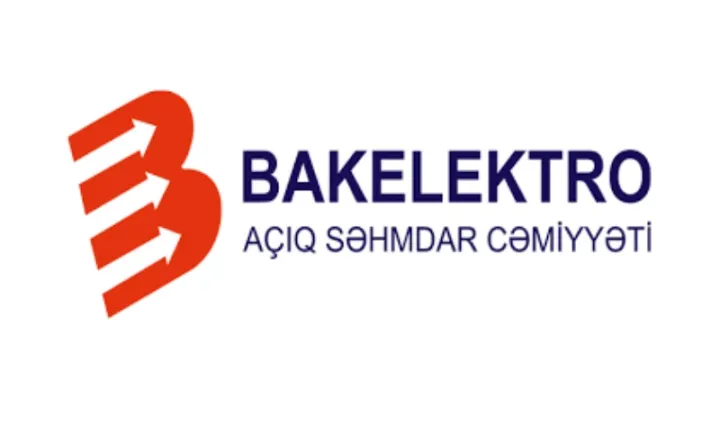
"Bakı Metropoliteni”ndən "BAKELEKTRO"ya 3,9 milyon manatlıq sifariş

Ziraat Bank Azərbaycan II Azərbaycan–Türkiyə İnvestisiya Forumunun baş sponsorlarından biri oldu










